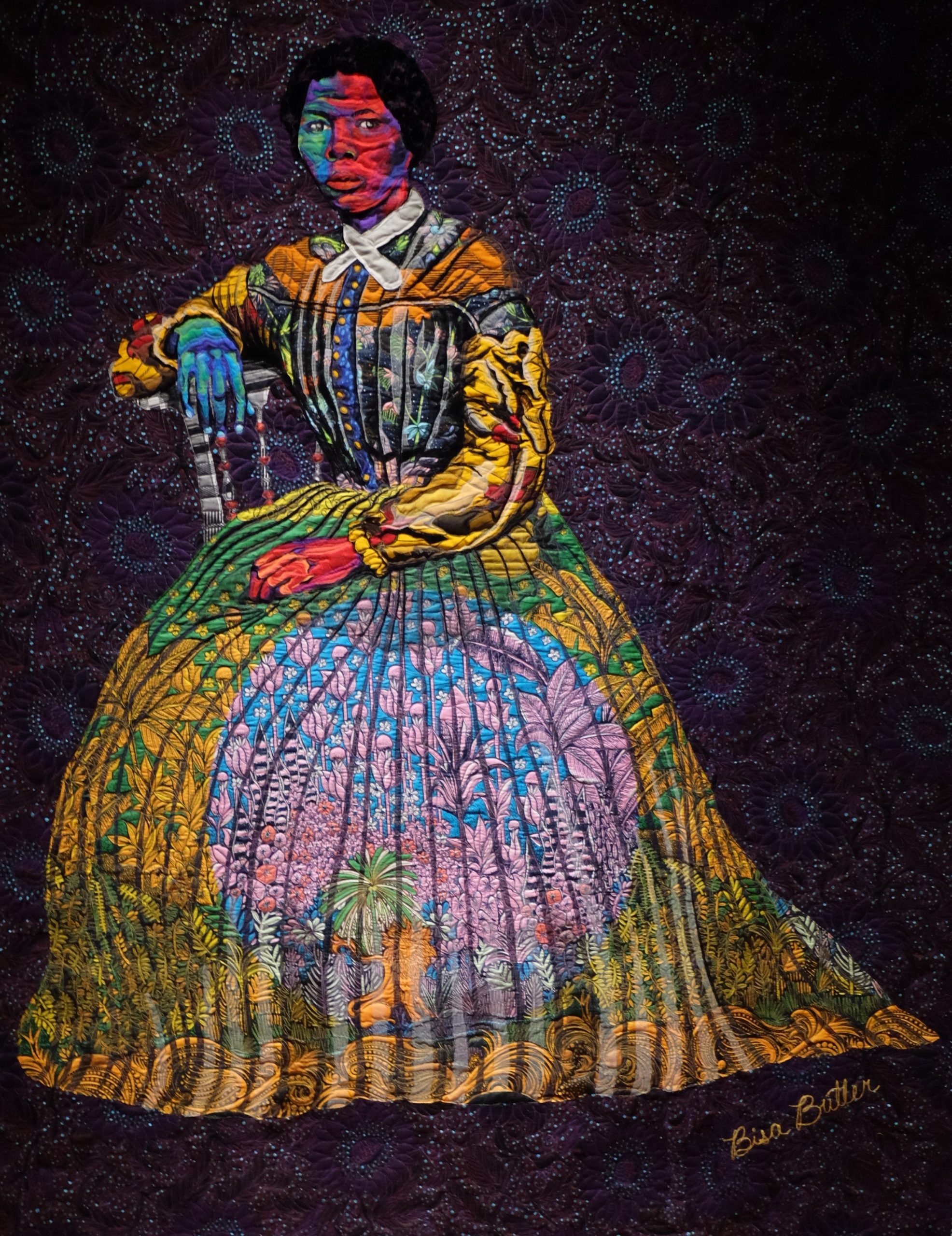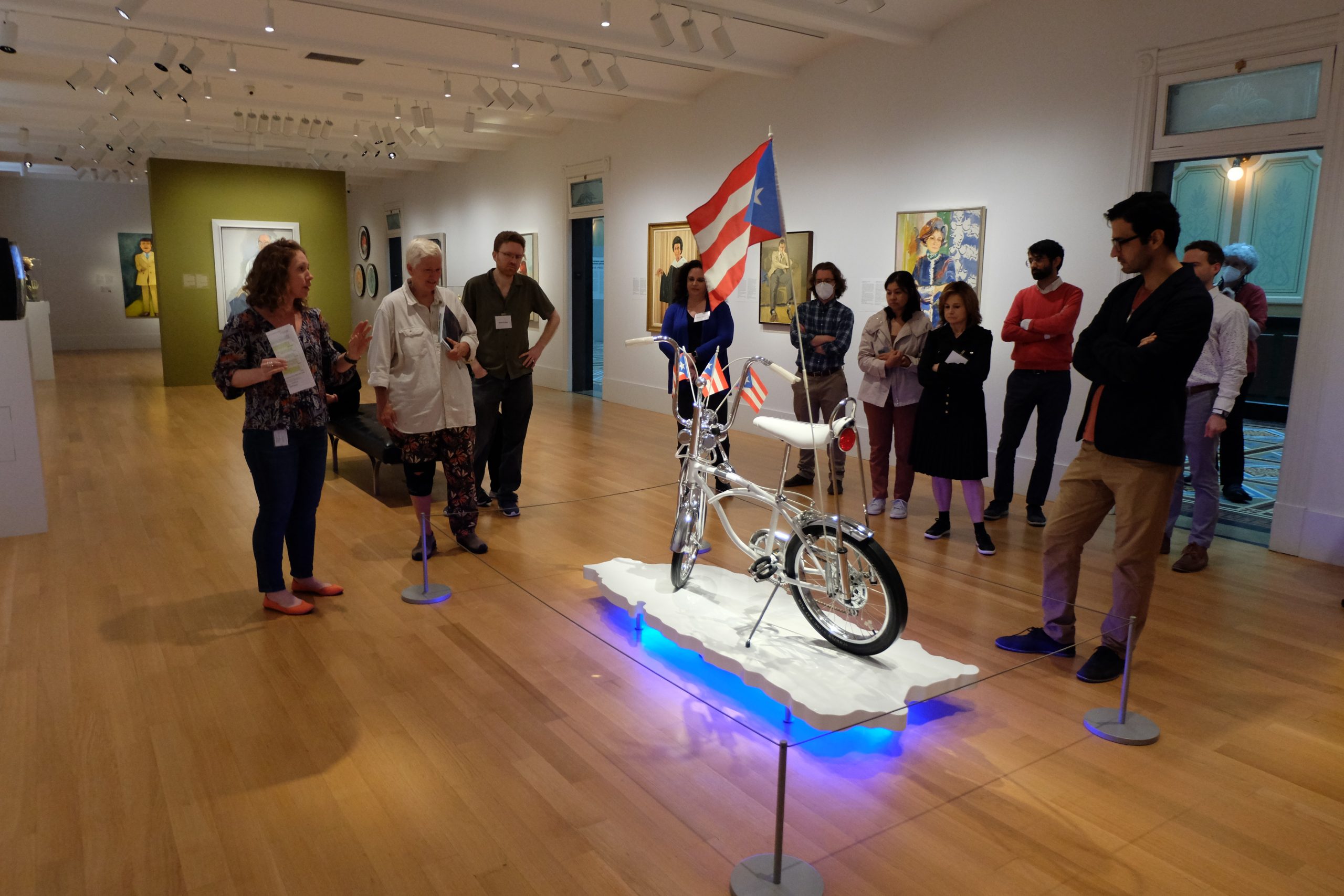When I last visited the National Museum of African American History and Culture, I started…
by Professor Katya Salmi, Sociology
 This past Monday on October 9th 2023, students from the remote section of my sociology class, Race and Ethnic Relations, met in person to visit the Americans exhibit at the National Museum of the American Indian. We picked this date to accommodate students’ schedules, but it was fortuitous that our visit aptly fell on Indigenous People’s Day. We felt very lucky to be able to spend this holiday that honors, celebrates, and commemorates Native Americans visiting this museum.
This past Monday on October 9th 2023, students from the remote section of my sociology class, Race and Ethnic Relations, met in person to visit the Americans exhibit at the National Museum of the American Indian. We picked this date to accommodate students’ schedules, but it was fortuitous that our visit aptly fell on Indigenous People’s Day. We felt very lucky to be able to spend this holiday that honors, celebrates, and commemorates Native Americans visiting this museum.
We first entered into the big hall of the exhibit where stereotypical depictions of Native Americans are exposed on hundreds of objects and images from everyday household products, dolls, and motorcycles to advertisements and warheads. We then watched a brief video that discusses the origins and truths behind Thanksgiving before students roamed on their own visiting the three main rooms that challenge misconceptions and false representations of Pocahontas, the Battle of Little Bighorn, and the devastating Trail of Tears that displaced approximately 68,000 Native people after the passing of the Indian Removal Act in 1830. It is estimated that thousands, possibly ten thousand, of Native Americans died on this forced relocation westward.

Students were excited to have an opportunity to learn more about Native Americans as they conveyed they did not know very much to begin with and remarked on the seeming invisibility of Indigenous people today. Some were concerned that they had barely been taught anything about Native Americans previously. Students quickly expressed amazement and shock at the negative representations of Indigenous People such as the aggressive and violent imageries linking Indigenous people to war and the repeated use of Native imagery as mascots for sports teams and commercial products.
I was thrilled to see how students were able to take the concepts we had been learning about so far in the semester around institutional racism, racialization, and cultural supports for racism and apply them to the very real historical and contemporary examples they were encountering in the Americans exhibit. At the end of the visit, we spent some time in the final room “Americans Explained” where we discussed the purpose of this exhibit in challenging the unequal racialized power dynamics involved in the creation and perpetuation of Native American stereotypes and the role of museums in decolonizing minds by challenging inaccurate histories and representations. Students then took a few minutes to reflect on their experience by writing on one of the postcards available in this room.
After the visit, some students took the opportunity to visit the rest of the museum or to visit another museum – one student went to the National Museum of African American History and Culture, which resulted in a meaningful and rich debrief in our next class back on zoom.
My students will now be working on their assignments related to this visit: a paper that explores the racialized identity of “American” through an examination of the role of museums as cultural institutions in supporting racism and how decolonized museums can be agents of change (or not), and a padlet exhibit of two artifacts that showcase their understanding and interpretation of this American identity.

“Native Americans are the original people of America, they are the true Americans. Walking through the museum, I was able to learn about the untold histories of Native Americans. I thoroughly enjoyed the readings and images as they kept me engaged.”





This Post Has 0 Comments